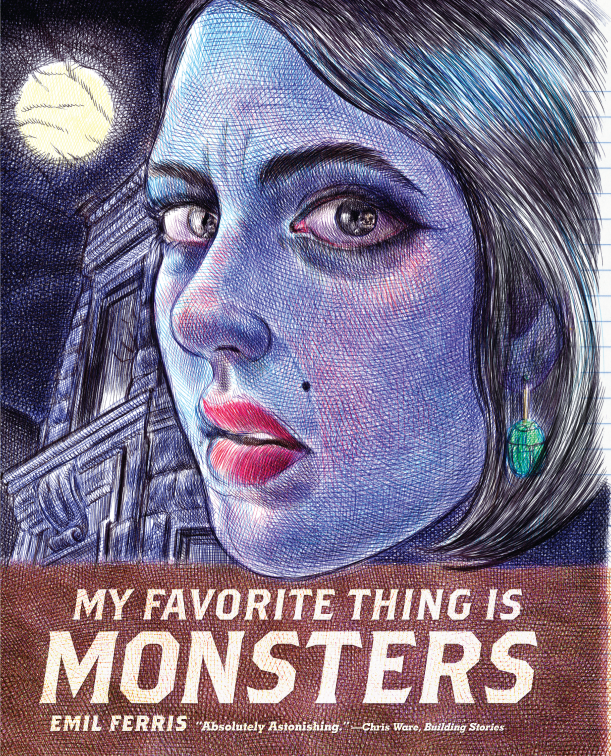More a coffee-table book than a graphic novel, Emil Ferris’s My Favorite Thing Is Monsters has something of a monstrous presence about it. At 9 by 11 inches in frame, and just shy of 400 pages in length, it looms over the zines, the floppy single issues or the trim trade paperbacks with which it might share shelf space. Crack open the cover, and out spills its colour-pencilled innards, its elegantly cross-hatched guts. This is the journal of Karen Reyes: 10-year-old horror fan, pubescent werewolf, and wannabe private eye.
The year is 1968, the place is Chicago, and there has been a murder – or so Karen thinks. Her upstairs neighbour, the enigmatic Anka Silverberg, has died under mysterious circumstances from a bullet to the heart, and it falls to our young narrator, donning her big brother’s raincoat and fedora, to pick up the case. Karen’s precocious investigations soon expand to encompass the world around her, scrutinising Anka’s traumatic early years in Weimar and Nazi Germany, long-buried family tragedies, and the turbulent changes within her own body and mind.
Testimonials from graphic novel titans Chris Ware (Building Stories, Jimmy Corrigan, The Smartest Kid On Earth) and Alison Bechdel (Fun Home, Are You My Mother?) are key: this is a dense, multi-layered work that delights the eye, while drawing the unsuspecting reader into its subterranean, subtextual lair. My Favorite Thing Is Monsters is at once a murder-mystery, a tender coming-of-age tale, a sociological survey of class and racial tensions in 60s Chicago, and a deep-dive into the endlessly applicable literary-artistic device of the ‘monster’ (and the horror genre as a whole) as metaphor, symbol, and escapist fantasy. Karen is comforted by the conventions of cheesy, Hammer-style horror, and finds an avatar for her awkward, adolescent body image in Lon Chaney Jr.’s Wolf Man. But what about real-life horrors – death, the Holocaust, homophobia and sexual abuse?
This is a stunning debut from Ferris, who enters the book-length comics field after a career working in illustration, design and visual art. Reportedly started as a form of physiotherapy after a case of West Nile virus left the author paralysed, the book effortlessly flits from style to style, mimicking the voracious appetite, and developing vision, of an impressionable and open-minded youngster. Reproductions of horror magazine covers with fictional, yet apt titles like Ghastly, Horrific and Dread share sketchbook space with Karen’s interpretations of famous artworks found at the Chicago Art Institute, as well as detailed portraiture and stylised comic sequences reminiscent of Mad Magazine and contemporary alt-comix.
The book is a beast to behold. Sweeping not just in narrative, but in style, it is nourishing for the eye and for the mind. Hollywood has already optioned the rights for a big-screen adaptation, but no film could effectively capture what Ferris has achieved here. The second volume, due out later this year, cannot come soon enough.
